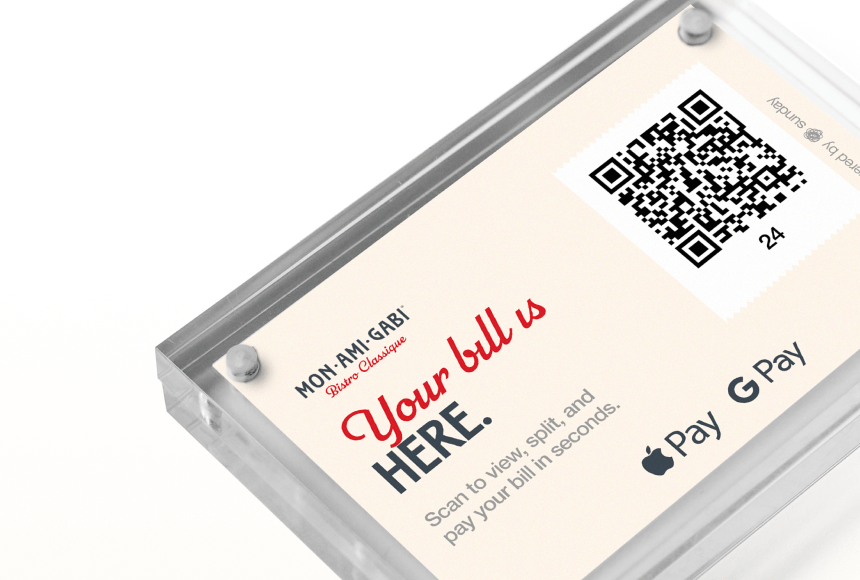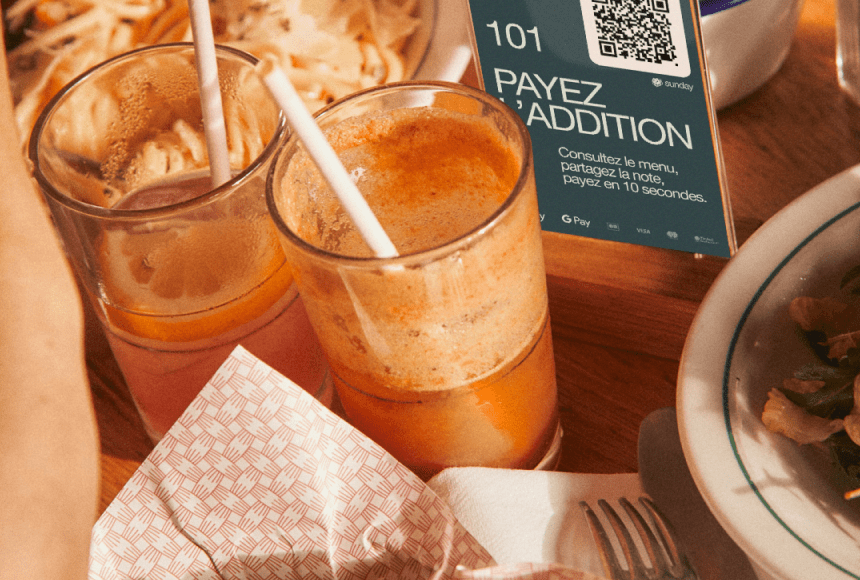
How Tailored Tip Suggestions Can Elevate Your Restaurant’s Revenue
The Rise of the “Smart Tip Prompt”
Tipping has always been a crucial part of restaurant operations in the United States. It directly impacts your servers’ take-home pay, contributes to employee satisfaction, and, ultimately, shapes the quality of service customers receive in your dining room. But how can you make sure your guests feel both motivated and comfortable when it comes to leaving tips?
Here’s where “smart tipping prompts” step in. These prompts, usually integrated into your payment process, suggest a range of tip amounts that diners can quickly select. Think of them like a subtle nudge, similar to a friendly “Would you like dessert?” after a meal—no pressure, just a helpful suggestion at just the right time.
In essence, smart tipping prompts are thoughtful call-to-actions that remove guesswork from tipping. They’re designed to support your staff, enhance the dining experience, and drive better gratuities. The concept might seem simple, but it delivers powerful results: higher checks, happier teams, and a more streamlined end-of-meal process.
Why Tipping Matters More Than Ever
Over 80% of U.S. restaurants rely on tips to supplement the base wages of their servers, bartenders, and front-of-house staff. According to Toast’s 2022 Restaurant Tipping Trends Report, the national average tip hovered around 19% for full-service restaurants. That’s decent, but it can fluctuate due to various factors—customer mood, demographic, time of day, location, and even the weather on a given day.
With rising labor costs and economic uncertainty on everyone’s mind, capturing every opportunity to maximize gratuities has become a priority. It’s not just about pocket change: Proper tipping boosts morale, helps reduce turnover, and increases the likelihood your staff will provide top-notch service. This is where optimized, strategic tipping suggestions come in.
The Psychology Behind Tipping Prompts
Why do digital tipping prompts lead to more generous gratuities? There’s an interesting mixture of consumer psychology, convenience, and social norms at play:
- Anchoring Effect: When you display a set of tip percentages—like 15%, 20%, or 25%—customers tend to select from these suggested amounts. If your prompts start higher (e.g., 20%, 25%, 30%), that “anchor” subconsciously nudges diners toward higher tips.
- Eliminating Guesswork: People often wonder what the “right” amount to tip is. By providing a handful of options, you remove uncertainty. This is especially helpful for visitors or new diners who aren’t sure of local tipping norms.
- Efficient and Discreet: A well-designed payment system with concise tip prompts keeps the process quick and private. Guests can tap on a recommended amount without feeling watched or rushed.
- Positive Reinforcement: Smart prompts can frame tipping as an extension of gratitude, rather than an obligation. A kind message—like “Thank you for rewarding our team’s effort!”—positions the tip as a well-deserved gesture.
All these elements work together to foster a sense of goodwill and appreciation. It’s not just about the higher tip; it’s about creating a positive experience from order to payment.
Crafting Smart Tipping Prompts
So, how do you design these prompts to get the best results? Remember that each dining establishment is unique, so your tipping prompts should reflect both your brand identity and the expectations of your clientele. Below are some key considerations:
- Location Matters: A 25% tip might be standard in a high-end urban bistro, but could feel steep in a casual diner. Tailor your suggested amounts to match your clientele’s standard tipping behavior.
- Language & Tone: Maintain a friendly, welcoming tone that aligns with your restaurant’s ambiance. A phrase like, “We appreciate your support of our team” adds warmth and authenticity.
- Data-Driven Percentages: Look at your past tip averages. If your average tip is 18%, consider prompting 18%, 20%, and 25% as preset options to gently encourage diners upward while remaining within a comfortable range.
- Custom Tip Freedom: Always allow a custom tip option for diners who prefer to calculate their own amount. This fosters a sense of trust and reduces any pressure your suggested prompts might create.
- Smooth UI/UX: Especially if you’re using mobile payment solutions or tablets, keep it visually clean and intuitive. The fewer clicks or taps, the better.
By offering a smart set of tipping options, you empower your guests to quickly show appreciation to your staff without an awkward “mental math” moment or social hesitation.
Boosting Employee Satisfaction and Retention
Higher tips mean happier staff—no surprises there. But let’s delve deeper into why tip optimization has a direct impact on your team’s overall job satisfaction and retention.
When servers consistently receive competitive gratuities, it:
- Attracts Top Talent: In areas where restaurants often compete for qualified staff, stronger earning potential gives you a hiring edge.
- Improves Morale: Receiving fair compensation for excellent service motivates servers to keep up the good work, greeting each table with a smile.
- Reduces Turnover: High employee turnover is expensive—it involves time and money spent training new hires. Retaining staff through better tipping experiences cuts these costs and preserves your institutional knowledge.
- Supports Team Culture: When everyone shares in a culture of gratitude, front-of-house and back-of-house teamwork feels smoother and more cooperative.
We all know that team dynamics can make or break your restaurant’s atmosphere. By leveraging a payment approach with smart tipping cues, you reassure your employees that you prioritize their well-being.
How Digital Payment Systems Fit In
In many restaurants, the old-fashioned credit card slip, pen, and manual tip entry are rapidly giving way to digital solutions. Handheld card readers, mobile apps, and flexible online checkouts can seamlessly build tipping prompts into the final payment stage.
Here’s why digital systems, like sunday, have an advantage:
- Instant Check Splitting: If multiple diners at a table want to split the bill, a digital payment platform can handle divisions instantly. This also offers each person their own tipping prompt, encouraging the total tip to be distributed fairly.
- Quick Google Reviews: Some payment apps ask customers if they’d also like to leave a short review of their experience. This easy integration can boost your online presence while still giving guests a quick payment and tipping interface.
- No Lost Checks or Receipts: No more rummaging around for paper checks at the table’s edge—everything happens directly on the diner’s phone or a user-friendly display, so it’s easy and convenient.
- Data Insights: Digital platforms often come with dashboards that show tip trends over time, alongside other metrics like total sales and table turnover rates. This data can guide you in refining your tipping strategies.
Ultimately, adopting a modern solution for payments and tips visibly demonstrates to your guests that you want their experience to be hassle-free. It’s convenient for diners—and your staff reaps the rewards of better tips.
Comparing Analog vs. Digital Tipping
To illustrate the benefits of smart tipping prompts, let’s look at an example scenario. Imagine you own two locations of the same restaurant:
| Location A (Analog) | Location B (Digital) |
|---|---|
| Uses pen-and-paper receipts and a payment terminal at the counter. Guests fill in tip amount by hand. | Offers pay-at-table technology with built-in tip prompts at 18%, 20%, 25%, plus a custom tip field. |
| Servers wait for the tip breakdown, process each card, then return to the table. | Diners pay in seconds, no back-and-forth with the server, and see a friendly note thanking them. |
| Average tip is around 17–18%, with a fair bit of variation day to day. | Average tip hovers around 20–22%, and staff consistently report feeling more appreciated. |
Over time, that difference in average tip amounts adds up. The improved tip average at Location B translates to a more satisfied team and, in turn, better service quality—creating a positive cycle of staff and guest happiness.
Practical Tips to Implement Smart Tipping Prompts
If you’re considering a move toward a more digital or optimized tipping setup, here are practical tips for making the transition seamless:
- Start Testing Incrementally: If you’re not ready to go all-in on mobile payment, try introducing a user-friendly credit card terminal with tipping prompts. Gather feedback from servers and guests before you expand.
- Train Your Team: Show servers precisely how the new tipping prompts look and function. Encourage them to walk guests through the process if questions come up.
- Observe Restaurant Culture: Some establishments, like fast-casual eateries, might prefer a more subtle approach, while a high-touch fine dining restaurant might keep prompts discreet yet polished.
- Monitor the Numbers: Use your platform’s analytics to track how often people choose each tipping option. This data will help you optimize your suggested tip percentages over time.
- Educate Customers: A brief note in the payment process explaining how tips support the staff and enhance service can go a long way in fostering goodwill.
These practical steps ensure that when you shift to a system with tipping prompts, it meshes effortlessly with your brand identity and customer expectations.
The Impact on Table Turnover
Time is money in the restaurant world. The longer a table remains occupied, the fewer total seatings you can accommodate in a day. By streamlining the payment and tipping process, you potentially shave valuable minutes off each table’s stay.
When guests can pull out their phone, scan a QR code, select a tip amount, sign digitally, and leave—all within a minute or two—table turnover naturally improves. And that’s good news, because:
- You can accommodate more diners during peak hours, increasing overall sales.
- Your servers spend less energy juggling multiple cards, receipts, and separate checks.
- Quicker payments mean your staff can focus on delivering excellent service instead of managing paper slips.
Faster turn times can play a big role in boosting both revenue and the guest experience. With each table cycle running more smoothly, your team can maintain a consistent flow of quality service.
Enhancing Guest Satisfaction (And Reviews)
People love convenience and clarity, especially at the end of a meal. The last thing they want is the awkward glance around for the server when they’re ready to settle up. By employing a smart tipping prompt within a seamless payment solution, you remove that friction point altogether.
That small change can have a big ripple effect on your guest satisfaction ratings:
- Self-Paced Payment: Diners can pay the moment they’re ready, eliminating potential impatience.
- Discreet Tipping: Guests can quickly select a recommended tip without fear of judgment from other diners or staff.
- Positive Emotional Impact: Expertly placed prompts can reinforce gratitude—“Your tip supports our amazing servers!”—and encourage a more generous tip.
- Opportunities for Feedback: Timesaving payment platforms let you invite guests to leave a quick Google review. This real-time invitation often captures positive feedback that diners might otherwise forget to share upon leaving.
That’s a winning recipe, especially if you’re looking to cultivate long-term relationships with your customers.
Smart Tipping in Different Service Models
Every type of restaurant—from quick-service to upscale dining—can use tipping prompts effectively. Still, each service model introduces its own nuances:
- Fast-Casual Eateries: When the average check is small, tip prompts might need to emphasize dollar amounts rather than percentages. A quick line like “Help us keep our staff smiling!” could go a long way.
- Bars and Cafés: Baristas and bartenders often rely on a tip jar—but a digital tip prompt at the point of sale (POS) can reinforce tipping, especially when guests open tabs.
- Fine Dining: Here, subtlety is key. High-end clientele will nearly always tip generously, but carefully placed prompts can maintain brand elegance while rewarding excellence among your staff.
Regardless of format, providing a smooth tipping method is about giving guests a respectful choice and staff uplifting earning potential.
Keeping It Ethical and Inclusive
When adding tipping prompts, restaurants sometimes worry about seeming pushy or exploitative. The key is a respectful balance. Present tip suggestions as a friendly guideline, not an imposed demand. Use language that:
- Welcomes everyone, regardless of background
- Stays transparent about where tips go and how they help the team
- Does not pressure guests but invites them to express gratitude if they feel so inclined
Inclusivity extends to your staff, too: if you share tips among the team (including the kitchen), clarify this in your prompts or signage. Knowing that gratuities are shared among those who cook and serve can encourage some guests to tip more generously.
The Value of Tracking and Iterating
After implementing smart tipping prompts for a few weeks or months, analyze the data:
- Average Tip Percentage: Track how it changes after introducing new prompts or percentages.
- Time to Pay: Monitor how quickly guests complete transactions. A significant drop in payment time could mean better table turnover.
- Custom Tips: Note how many diners opt for a custom amount over pre-set suggestions. If it’s high, consider adjusting your default tips or how you phrase them.
- Guest Feedback: Encourage staff to ask if guests had any difficulty with the payment interface. Address areas of confusion quickly to keep user experience high.
Data is powerful. By reviewing feedback loops, you can continue refining your platform’s tipping experience, leading to higher staff satisfaction, smoother operations, and happier customers.
The Role of Communication and Transparency
Be open with your staff—and customers—about your tipping system. Great communication fosters trust. Let your servers know exactly how and why you’re suggesting certain tip amounts, so they feel comfortable discussing it if customers have questions.
Also, train your servers to talk about the payment process warmly and confidently. For instance, when setting the check down, a simple statement like:
“You can pay right here on your phone using the QR code, and it will show some tip suggestions. Of course, you can also choose your own amount if you prefer.”
This ensures guests feel informed, not coerced. Such transparency is vital for building goodwill in the long run.
Case Study: A Neighborhood Bistro’s Transformation
Imagine Mark, who owns a modest neighborhood bistro frequented by families on weekdays and couples on weekends. He noticed staff morale dipping as they consistently earned lower tips than other establishments in nearby areas. Mark decided to adopt a digital payment solution with a few thoughtful tipping prompts—18%, 20%, and 25%.
Within two months, here’s what happened:
- The average tip rose from 16% to 20%.
- Servers reported feeling less anxious at the end of each meal—no more waiting for guests to do mental math.
- Guests gave more positive feedback about the payment experience, especially those who disliked waiting for card slips.
- Happier staff took fewer sick days, and turnover dropped by 10%.
Mark also used the integrated platform analytics to see peak tipping days and times, calibrating his staffing schedule to align with higher traffic. He attributes the shift to a small but meaningful change in how the bistro handles tips—transforming the overall vibe of his dining room.
A Friendly Word About sunday
Tools like sunday make it incredibly simple for customers to scan a QR code, pay quickly, and leave a discreet yet generous tip. It streamlines the entire process, saving both time and effort for staff and guests. Although there are many digital payment solutions on the market, the user experience design behind sunday aims to remove friction and encourage warmth and connection—and those small touches often translate directly to higher gratuities.
Looking Forward: Setting Up for Lasting Success
Smart tipping prompts are not a passing trend. They represent an ongoing shift toward transparent, user-friendly payment experiences—an evolution that benefits everyone involved. By providing strategically designed prompts, you empower guests to tip confidently and fairly, boosting morale among your staff and reinvigorating your bottom line.
It all comes down to creating a positive feedback loop. When staff feel recognized financially, they deliver better hospitality. When guests sense genuine care, they reward that service. That cycle continues, helping your restaurant make great strides toward lasting success—and a memorable dining experience that keeps people coming back.
Frequently Asked Questions (FAQ)
1. Will suggesting higher tip amounts scare guests off?
Most guests understand typical tipping percentages. If you frame it as a friendly suggestion, rather than a demand, people usually appreciate the guidance. Including a custom tip option also reassures diners that they can choose their own amount.
2. Do digital payment solutions increase credit card fees?
Credit card processing fees remain mostly the same, whether you’re using a handheld payment terminal or a standard POS system. Digital payment solutions can reduce operational inefficiencies, which often offsets any minimal fee adjustments.
3. Are tipping prompts suitable for quick-service or counter-service restaurants?
Absolutely. Even in quick-service formats, tip prompts can gently encourage guests to reward the employees who prepare their orders. Just make sure the suggested tip amounts feel appropriate to a fast-casual or counter-service setting.
4. How can I train my staff to guide guests through tipping prompts?
Offer quick, hands-on demonstrations so your servers know exactly how the system works. Encourage warmth in communication—something along the lines of, “We’ve introduced a faster payment option so you can pay and tip right on your phone. We hope you enjoy the convenience!”
5. What if guests want to leave cash tips instead?
You can still present tipping prompts digitally while accepting cash tips. Many diners appreciate having both options. If they prefer cash, the prompts can be dismissed or left as is, and they can tip the traditional way.
Find out more today
Drop us your details below and we’ll reach out within the next 24h
More tips means a better service.
More tips mean better guest-experience, and better staff-retention.




